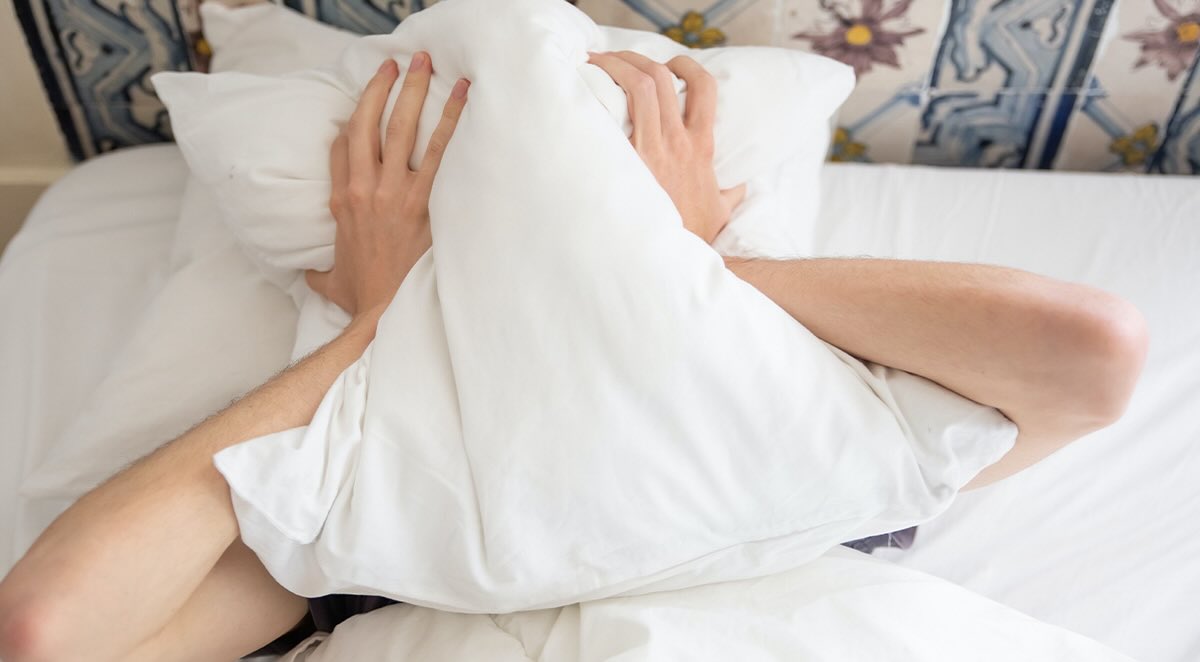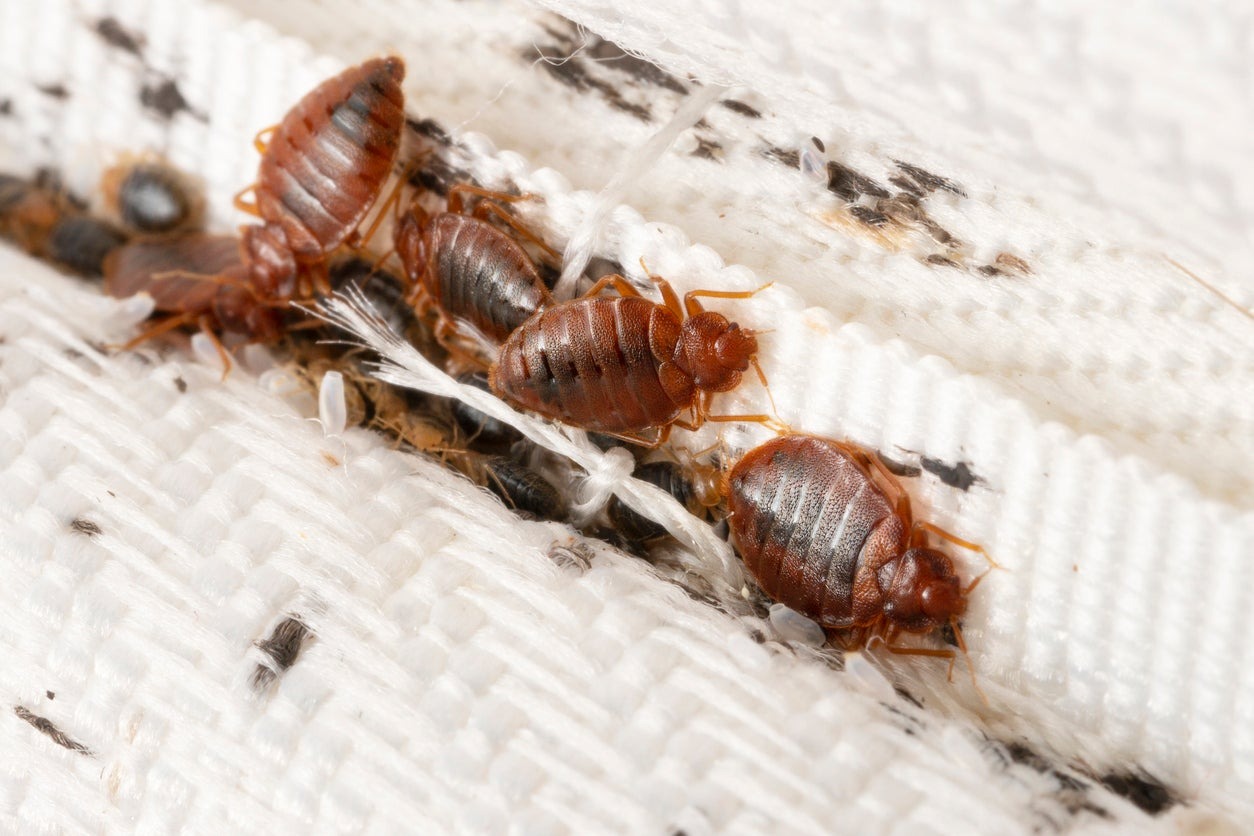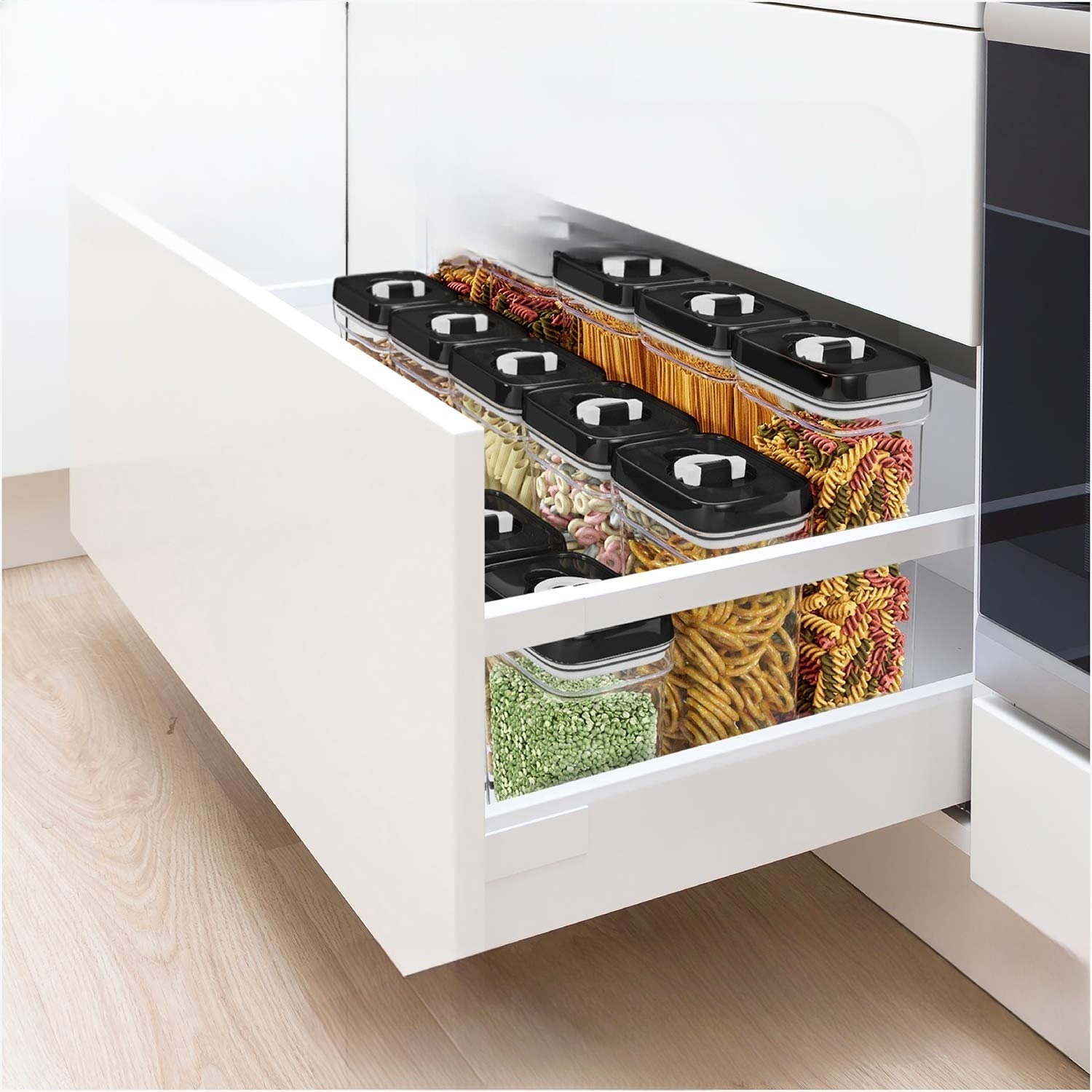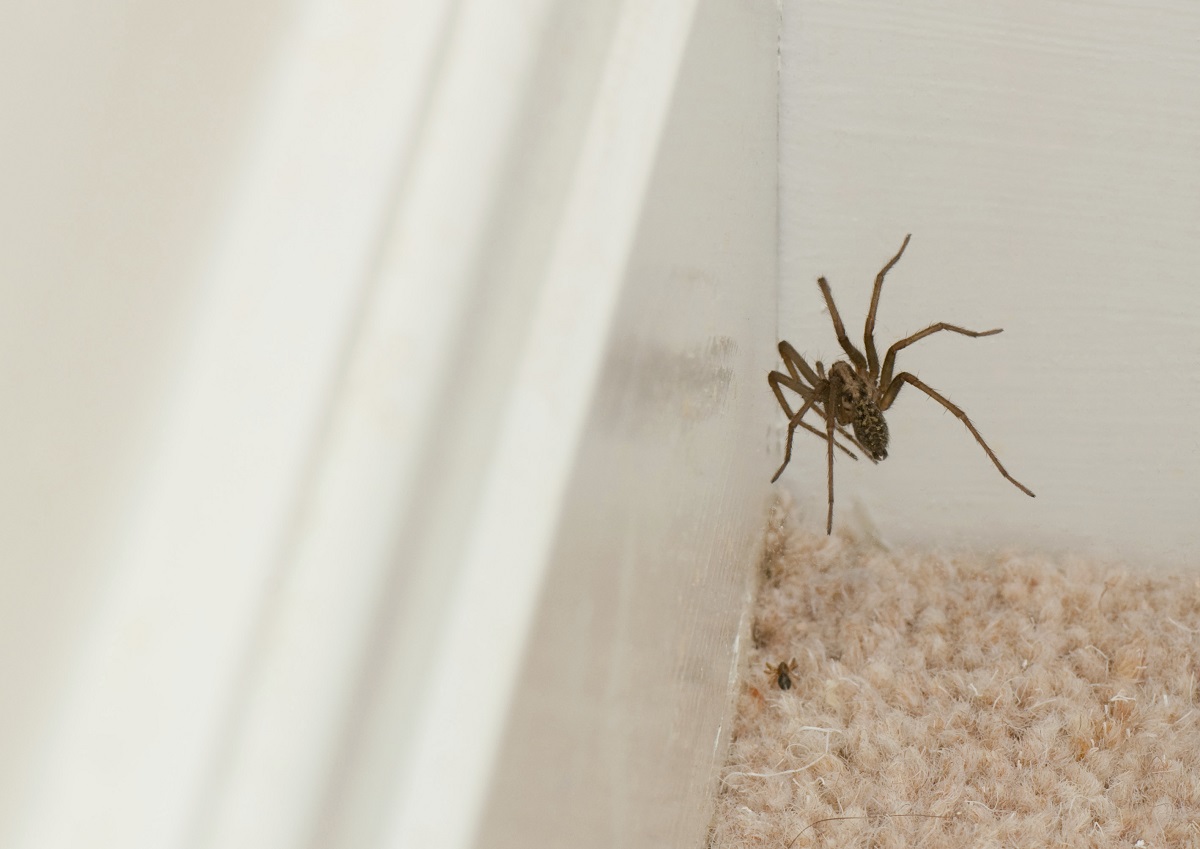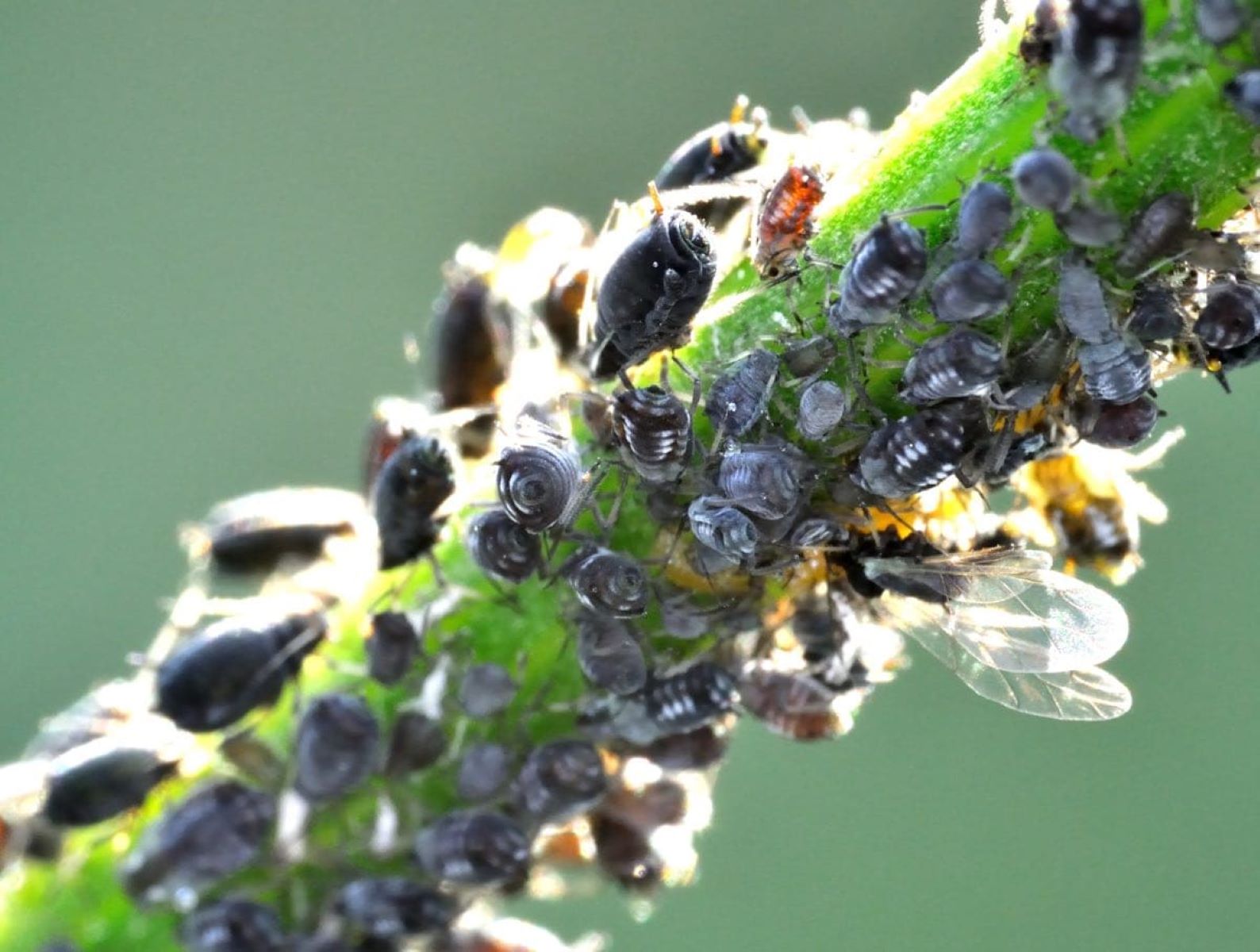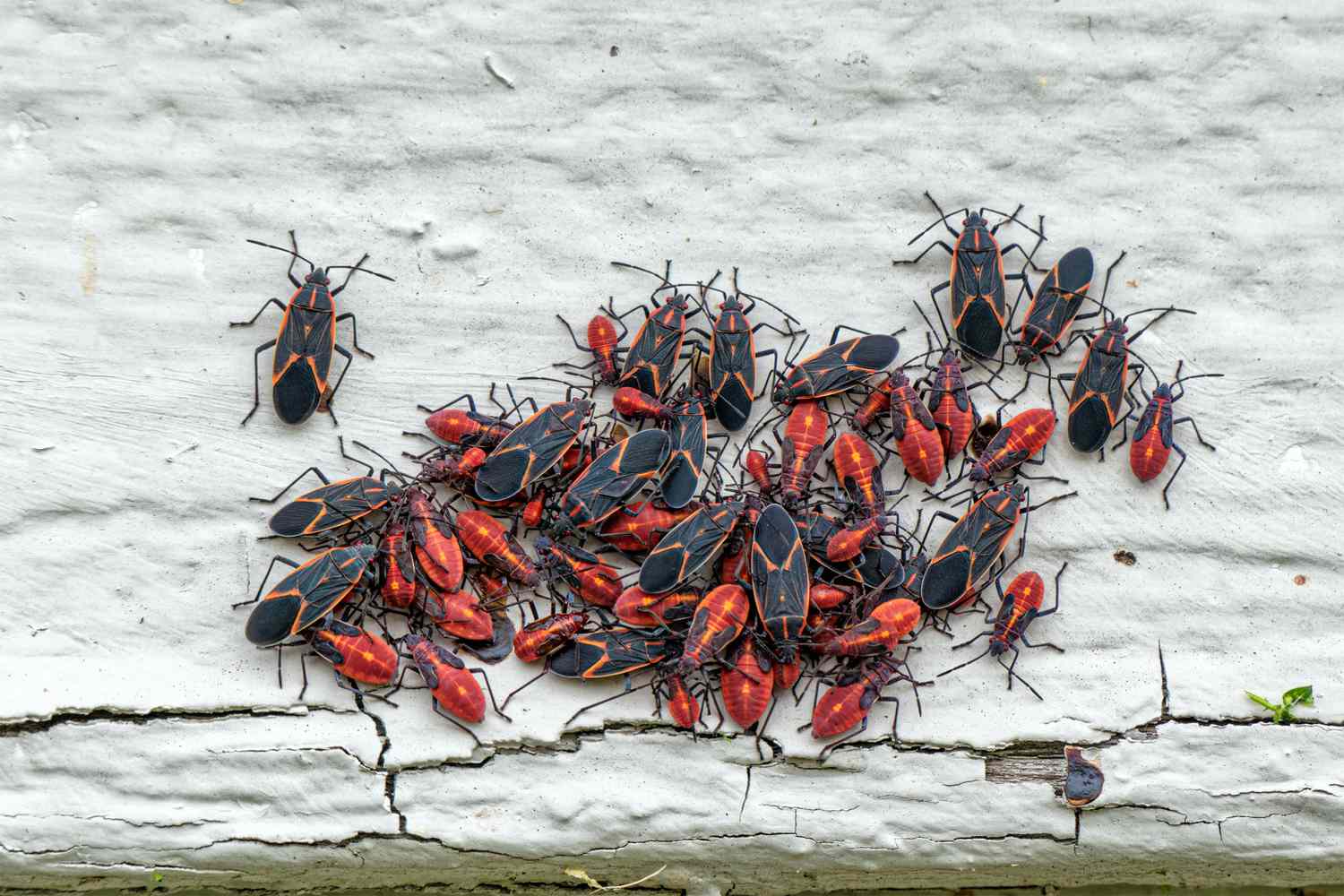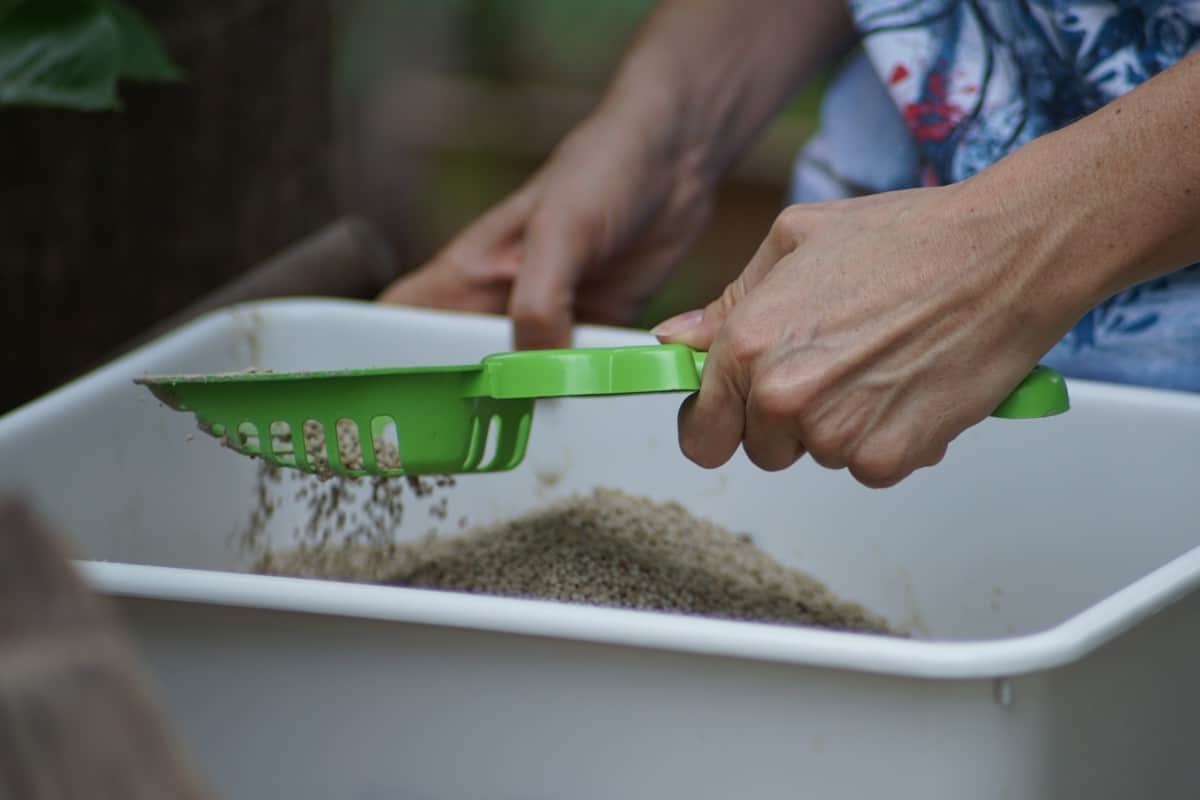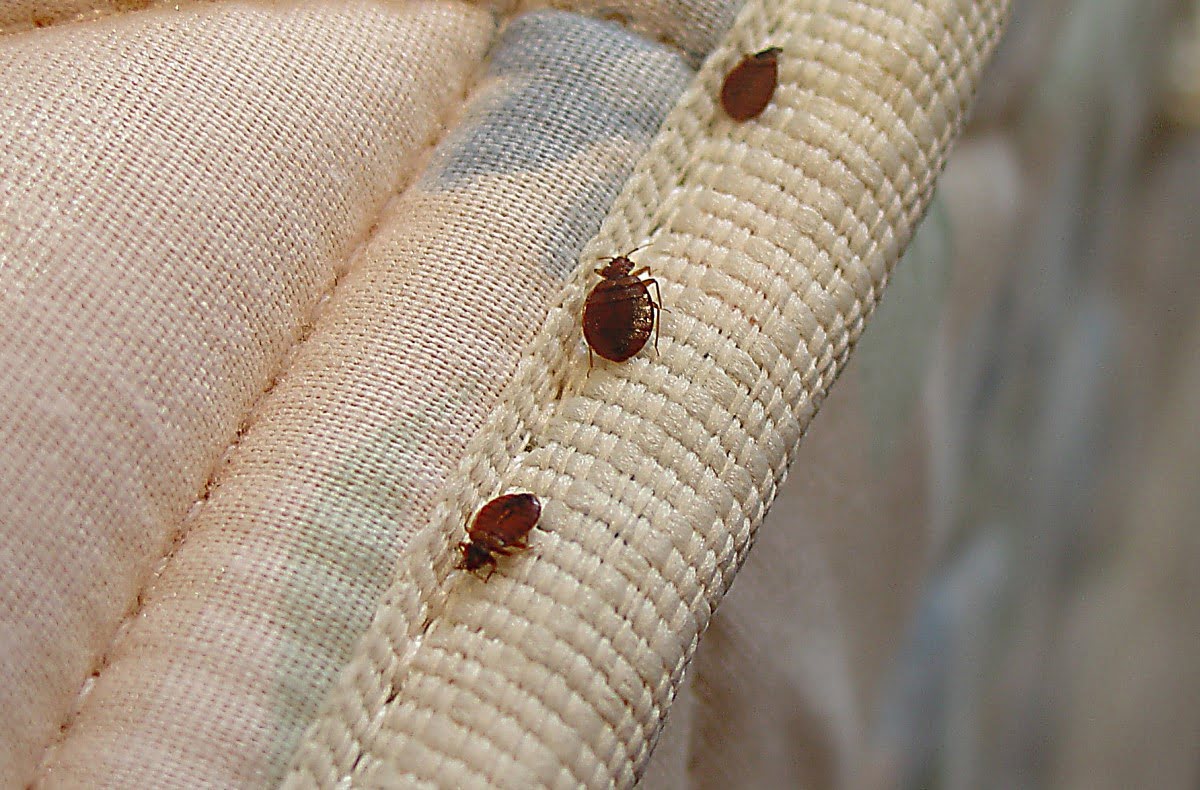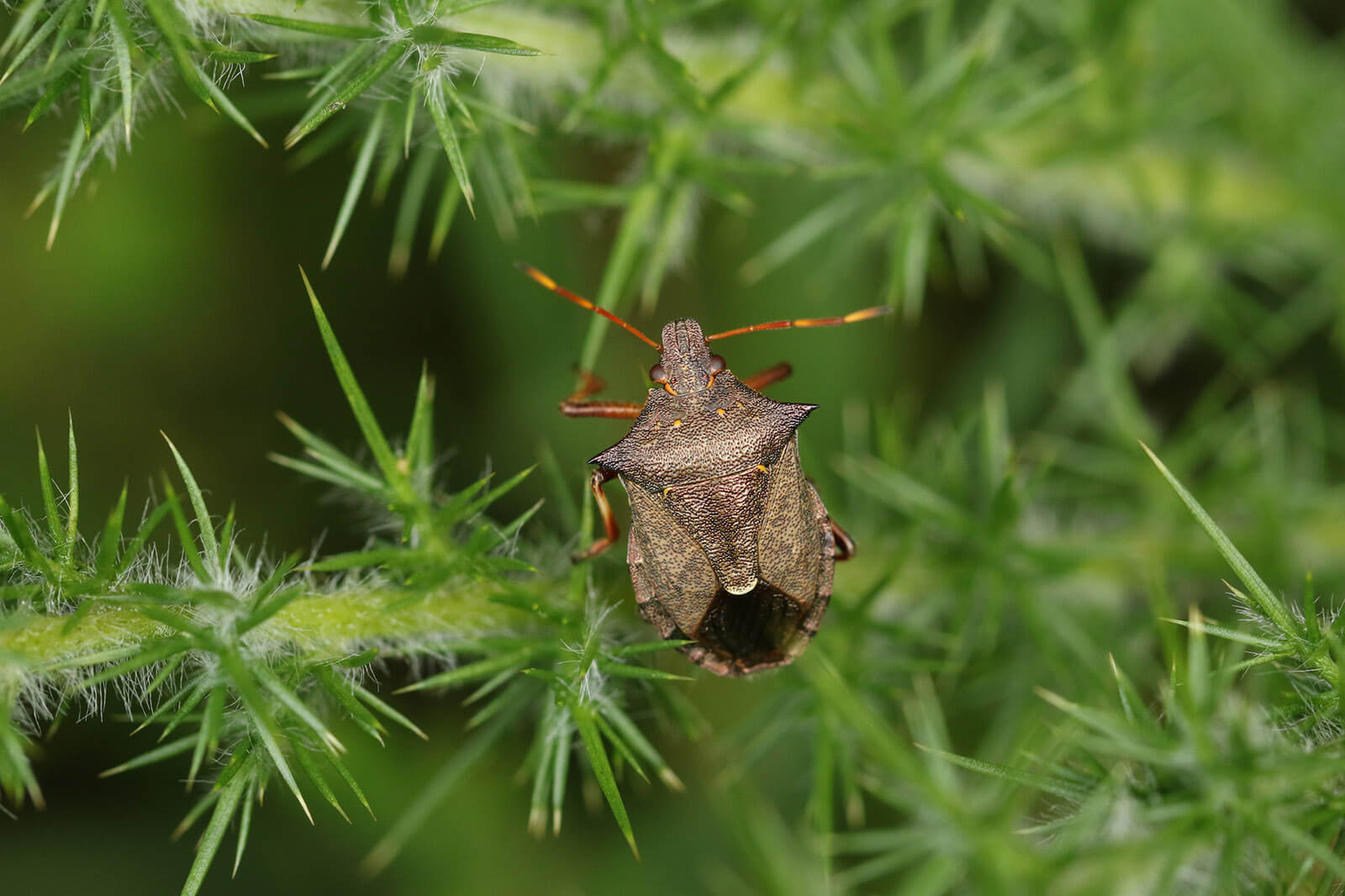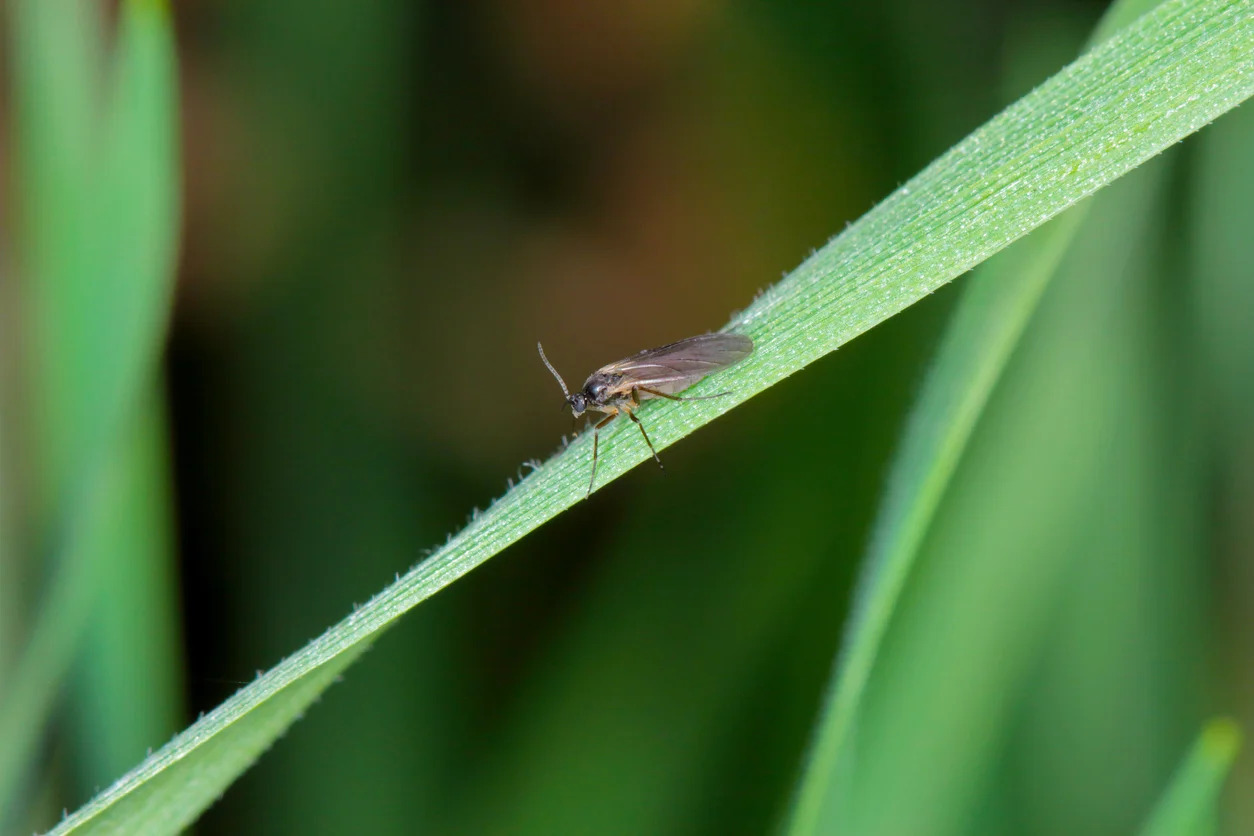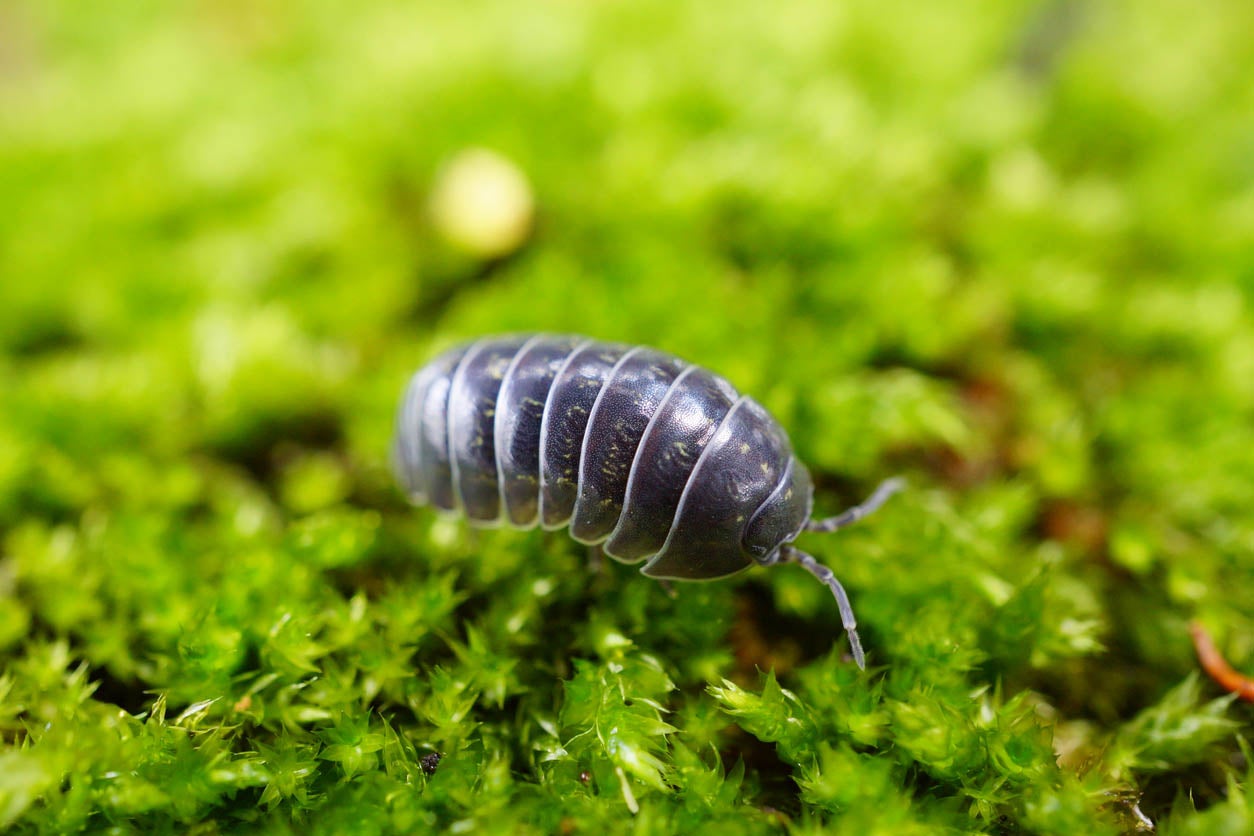Home>Furniture>Bedroom Furniture>How To Get Rid Of Bed Bugs
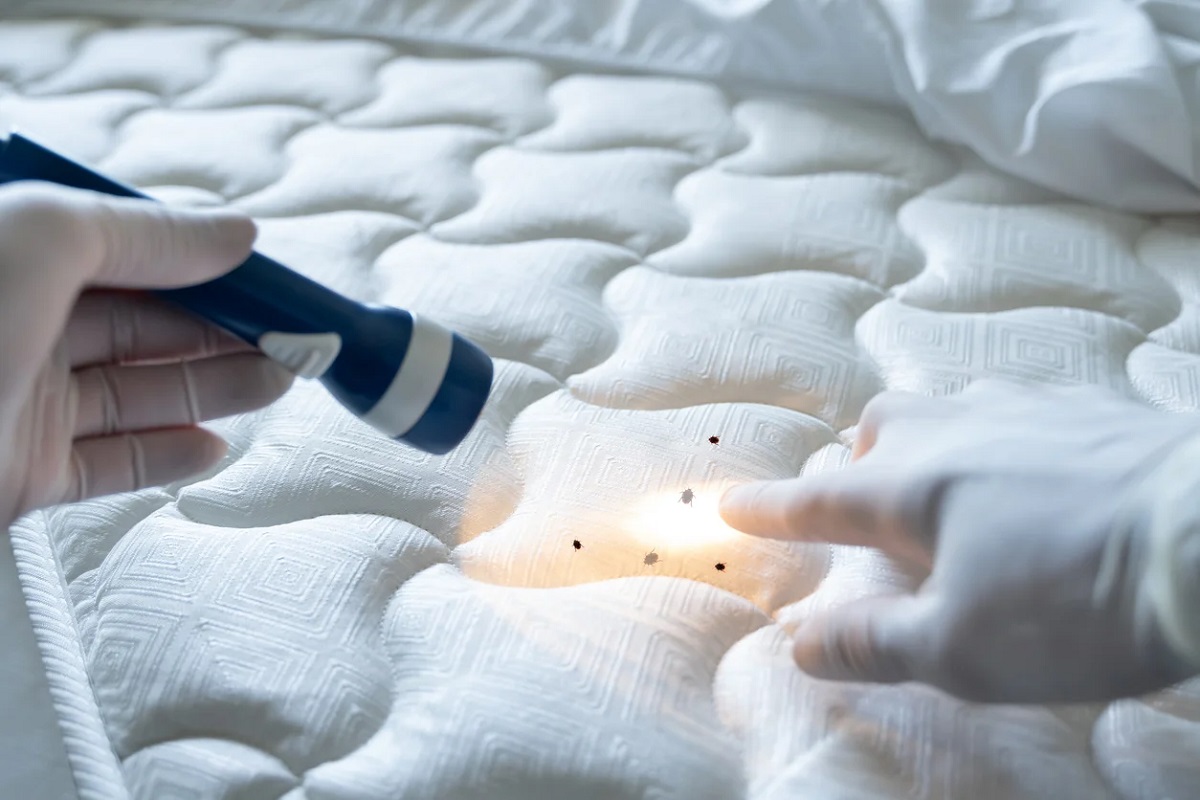

Bedroom Furniture
How To Get Rid Of Bed Bugs
Modified: January 9, 2024
Learn effective methods to eliminate bed bugs from your bedroom furniture. Follow our step-by-step guide to get rid of these pesky pests and enjoy a bug-free environment.
(Many of the links in this article redirect to a specific reviewed product. Your purchase of these products through affiliate links helps to generate commission for Storables.com, at no extra cost. Learn more)
Introduction
Welcome to the world of bedroom furniture! Nothing quite compares to coming home after a long day and sinking into the comfort of your own bed. However, what happens when unwanted guests decide to invade your sanctuary? Bed bugs can turn your cozy retreat into a nightmare. These tiny, vampire-like insects feed on human blood and can cause havoc in your home. But fear not! In this comprehensive guide, we will explore everything you need to know about getting rid of bed bugs and reclaiming your sleep haven.
Understanding the behavior and characteristics of bed bugs is the first step in combating these pesky pests. Bed bugs are small, brownish insects that measure about the size of an apple seed. They are nocturnal creatures that prefer to hide in cracks and crevices during the day, emerging at night to feed on unsuspecting humans. Contrary to popular belief, bed bugs are not a sign of poor hygiene; they can infest even the cleanest of homes.
Knowing the signs of a bed bug infestation is crucial in catching the problem early. Look out for rusty-colored stains on your sheets, dark spots on your mattress or furniture, and a musty odor in the room. It’s also important to be aware of the signs of bed bug bites, which can include red, itchy welts on the skin. By identifying these signs, you can take swift action to prevent the infestation from spreading.
Prevention is key when it comes to bed bugs. Take proactive measures to protect your home by reducing clutter, regularly vacuuming, and washing bedding and clothes in hot water. Use mattress encasements and inspect second-hand furniture before bringing it into your home. By implementing these prevention methods, you can significantly reduce the risk of a bed bug infestation.
In cases where prevention methods fail, you may need to take matters into your own hands. DIY bed bug treatments can help eliminate small infestations. From steam cleaning to freezing items, there are various techniques you can try. We will delve into these methods in detail and provide tips on how to effectively execute them.
Key Takeaways:
- Don’t let bed bugs ruin your sanctuary. Early detection, prevention, and professional extermination are key to reclaiming your peaceful sleep haven.
- Stay proactive and vigilant to prevent bed bug reinfestation. Follow post-treatment steps, minimize clutter, and schedule regular inspections for a pest-free home.
Read more: How To Get Rid Of Bed Bugs On A Couch
Understanding Bed Bugs
Before diving into ways to get rid of bed bugs, it’s important to have a solid understanding of these pests. Bed bugs, scientifically known as Cimex lectularius, are parasitic insects that primarily feed on human blood. Contrary to popular belief, bed bugs are not solely found in beds. They can infest various areas of a home, including furniture, carpets, and even electrical outlets.
Adult bed bugs are small, flat, and oval-shaped. They are typically reddish-brown in color, but may appear darker after feeding. Bed bugs have six legs and are roughly the size of an apple seed, making them difficult to spot with the naked eye. However, their presence can be detected through other signs and symptoms.
Bed bugs are predominantly nocturnal and are attracted to body heat and carbon dioxide. This is why they are commonly found in areas where people sleep, such as beds and couches. While they prefer feeding on humans, bed bugs can also bite other warm-blooded animals.
One of the key features that sets bed bugs apart from other pests is their ability to hide and survive without feeding for long periods. They can live for several months without a blood meal, making it challenging to completely eradicate them.
Another fascinating aspect of bed bugs is their reproductive capabilities. A female bed bug can lay hundreds of eggs in her lifetime, which typically hatch within one to two weeks. This rapid reproduction rate contributes to the rapid spread of infestations.
Bed bugs are known to be hitchhikers, thriving in environments where humans frequent. They can easily latch onto luggage, clothing, and even used furniture, spreading from one location to another. This is why it’s crucial to practice caution when traveling and bringing items into your home.
It’s important to note that bed bugs infestations are not necessarily a sign of poor hygiene. These pests can be found in both clean and dirty environments, as they are primarily attracted to warm-blooded hosts rather than dirt or clutter.
Understanding the behavior, characteristics, and habits of bed bugs is vital in effectively combating and preventing infestations. By familiarizing yourself with these factors, you’ll be better equipped to take the necessary steps to protect your home and eliminate these annoying insects.
Signs of Bed Bug Infestation
When it comes to dealing with bed bugs, early detection is key. The sooner you can identify a bed bug infestation, the easier it will be to eliminate them. Here are some telltale signs to look out for:
- Bloodstains on sheets and bedding: After feeding, bed bugs may leave behind small stains that resemble dark spots of dried blood on your sheets or pillowcases. These stains are often the result of accidentally squashing a bed bug while rolling over in bed.
- Dark or rusty spots on furniture and walls: As bed bugs move around your home, they may leave behind dark or rusty-colored fecal spots on furniture, walls, or other surfaces. These spots are often found in clusters or along the seams of mattresses and furniture.
- Shed skins: Like many other insects, bed bugs shed their exoskeletons as they grow. You may come across translucent bed bug skins, especially in areas where they hide or breed.
- Musty odor: Bed bugs release a pheromone that, when present in large numbers, can produce a distinctive musty odor. If you notice an unusual smell in your bedroom or other areas of your home, it could be a sign of a bed bug infestation.
- Visible bed bugs: If you are lucky, you might actually see live bed bugs crawling around. While they are small and expert hiders, especially during the day, an infestation can become severe enough to spot them in the open.
It’s important to note that bed bug bites are not a reliable indicator of an infestation. While bed bug bites can cause red, itchy welts on the skin, their appearance varies from person to person, and some individuals may not react at all to the bites.
If you suspect a bed bug infestation based on these signs, it’s essential to conduct a thorough inspection of your home. Check all bedrooms, including mattresses, box springs, bed frames, and headboards. Don’t forget to inspect furniture, cracks and crevices, electrical outlets, and baseboards as well.
While it may be tempting to try DIY solutions, it’s important to remember that bed bugs are resilient pests that require professional treatment to fully eliminate. Consulting a pest control professional is the best course of action to ensure effective eradication of bed bugs from your home.
Prevention methods
Preventing a bed bug infestation is much easier than dealing with one. By following some simple preventative measures, you can reduce the risk of bed bugs infiltrating your home. Here are some effective prevention methods to keep these pesky pests at bay:
- Reduce clutter: Bed bugs thrive in cluttered environments as it provides them with numerous hiding spots. Keep your home tidy and minimize clutter to eliminate potential hiding spots for bed bugs.
- Vacuum regularly: Regularly vacuuming your home, especially mattresses, furniture, and carpets, can help remove any bed bugs or eggs that may be present. Be sure to use a vacuum with a high-efficiency particulate air (HEPA) filter for optimal results.
- Inspect used furniture: Before bringing any second-hand furniture into your home, carefully inspect it for signs of bed bugs. Pay close attention to seams, crevices, and cracks where they are most likely to hide.
- Use mattress encasements: Encasing your mattress and box spring in a bed bug-proof cover can help prevent bed bugs from infesting these areas. Make sure the encasements are certified bed bug-proof and free of any existing infestations.
- Be cautious when traveling: Bed bugs are excellent hitchhikers and can easily be transported in luggage, clothing, and other items. Inspect your hotel room for signs of bed bugs, and keep your luggage elevated and away from the bed and furniture.
- Regularly wash and dry bedding: Bed bugs cannot survive high temperatures. Wash your bedding, including sheets, pillowcases, and comforters, in hot water and dry them on high heat settings to kill any potential bed bugs.
- Seal cracks and crevices: Thoroughly inspect and seal any cracks, crevices, or gaps in walls, baseboards, and furniture, as these serve as entry points for bed bugs.
- Consider professional inspections: If you live in an area with a high incidence of bed bug infestations or if you suspect a potential infestation, it may be worthwhile to schedule regular professional inspections to catch any problems early.
By implementing these prevention methods, you can greatly reduce the risk of a bed bug infestation in your home. However, if you do find yourself facing a bed bug problem, swift action is necessary to prevent the infestation from spreading. In such cases, it is recommended to seek professional assistance from a licensed pest control company that specializes in bed bug extermination.
Identifying Bed Bug Bites
Bed bug bites can vary in appearance from person to person, making it sometimes difficult to identify them accurately. However, there are some common characteristics that can help you determine if those suspicious welts on your skin are indeed the result of bed bug bites.
Bed bug bites typically appear as red, itchy welts on exposed areas of the body, such as the face, neck, arms, and legs. They often occur in clusters or in a linear pattern, as bed bugs tend to bite multiple times in a row while feeding.
One distinguishing feature of bed bug bites is the pattern of bites they create. Unlike mosquito bites, which are random and scattered, bed bug bites usually occur in a linear or zigzag arrangement. This is because bed bugs tend to feed in a systematic manner, moving in a straight line while biting.
It’s important to note that not everyone reacts to bed bug bites in the same way. Some people may have an immediate skin reaction, while others may experience delayed symptoms or no reaction at all. This variability in reactions can make it challenging to diagnose bed bug bites without other confirming signs of an infestation.
If you suspect bed bug bites, there are a few steps you can take to further confirm their source:
- Inspect your sleeping area: Examine your mattress, box spring, and bed frame for any signs of bed bugs or their fecal stains. Look for live bugs, shed skins, or bloodstains on your sheets.
- Check for bed bug activity: Use a flashlight to inspect the cracks and crevices around your bed, including baseboards, nightstands, and electrical outlets. Bed bugs are excellent at hiding, so thorough inspection is necessary.
- Consult a professional: If you are unsure about the cause of your bites or have other signs of a bed bug infestation, it’s best to seek the expertise of a professional pest control company. They can conduct a thorough inspection and provide appropriate treatment if needed.
Remember that bed bug bites alone are not enough to confirm an infestation. It’s essential to look for other signs of bed bugs, such as bloodstains or shed skins, to confirm their presence. If you suspect a bed bug infestation in your home, it’s crucial to take prompt action to prevent the problem from worsening.
While bed bug bites can be itchy and uncomfortable, they typically do not pose a serious health risk. However, for individuals with allergies or sensitivities, bed bug bites can lead to secondary infections or allergic reactions. If you experience severe itching, swelling, or signs of infection, seek medical attention.
Vacuum and steam clean your mattress, furniture, and carpets regularly to help eliminate bed bugs and their eggs. Dispose of the vacuum bag in a sealed plastic bag.
Read more: How To Get Rid Of Bed Bugs In A Dresser
DIY Bed Bug Treatment
Discovering a bed bug infestation in your home can be distressing, but there are several do-it-yourself (DIY) treatment options you can try before resorting to professional help. Keep in mind that DIY methods are generally best suited for smaller infestations or as a supplement to professional treatment. Here are some effective DIY bed bug treatment methods:
- Thorough cleaning: Start by decluttering the affected area and thoroughly cleaning your home. Use a vacuum with a HEPA filter to vacuum mattresses, furniture, carpets, and cracks and crevices where bed bugs may be hiding. Make sure to properly dispose of the vacuum bag or empty the canister in a sealed plastic bag to prevent spreading the bed bugs.
- Heat treatment: Bed bugs cannot survive in high temperatures. You can use heat to kill bed bugs and their eggs by washing infested clothing, bedding, and linens in hot water and drying them on the highest heat setting for at least 30 minutes. You can also use a steam cleaner to treat mattresses, furniture, and other infested surfaces.
- Cold treatment: Bed bugs are also sensitive to extreme cold temperatures. If items cannot be heat-treated, you can seal them in a plastic bag and place them in the freezer for a couple of days to kill the bed bugs.
- Encasements: Encasing your mattress and box spring in bed bug-proof encasements can help contain the infestation and prevent bed bugs from reaching you while you sleep. Be sure to choose encasements that are specifically designed to be bed bug-proof.
- DIY insecticides: There are some DIY insecticide options available, such as sprays and powders, that are labeled for bed bug control. When using these products, it’s essential to carefully follow the instructions and take appropriate safety precautions. Remember that DIY insecticides may not fully eliminate a large infestation and are best used for smaller or localized problems.
- Vigilant monitoring: After implementing DIY treatment methods, continue to monitor for any signs of bed bug activity. Regularly inspect bedding, furniture, and other areas where bed bugs commonly hide. If you spot any new signs of infestation or notice ongoing bites, it may be necessary to seek professional assistance.
While these DIY bed bug treatment methods can be effective in certain situations, it’s important to remember that bed bugs are resilient pests. DIY treatments may not be enough to completely eradicate a severe infestation. If your efforts are unsuccessful or if the infestation continues to worsen, it’s recommended to consult with a professional pest control company. They have the knowledge, experience, and specialized equipment to effectively eliminate bed bugs and ensure long-term eradication.
Bed bug infestations can be overwhelming, but with the right approach and a combination of DIY methods and professional assistance, you can successfully rid your home of these unwanted pests.
Professional Bed Bug Extermination Services
When it comes to severe or persistent bed bug infestations, professional bed bug extermination services are often the most effective solution. Bed bugs are notoriously difficult to eradicate, and hiring a professional pest control company can ensure thorough treatment and long-term prevention. Here are some reasons why professional bed bug extermination services are worth considering:
- Expert knowledge and experience: Professional exterminators have extensive knowledge and experience in dealing with bed bug infestations. They understand the behavior and habits of bed bugs, allowing them to implement effective treatment strategies. Their expertise ensures that all areas of infestation are addressed, significantly increasing the chances of complete eradication.
- Effective treatment methods: Pest control companies utilize a range of advanced treatment methods that are highly effective against bed bugs. These methods may include the use of specialized insecticides, heat treatments, and other professional-grade equipment. Professionals are trained in applying these treatments safely and effectively to eliminate bed bugs at all life stages.
- Comprehensive inspections: Professional exterminators conduct thorough inspections to assess the extent of the infestation. They are skilled at identifying the signs of bed bug activity and can pinpoint the areas where the bugs are hiding. This allows them to create a targeted treatment plan tailored to your specific situation.
- Prevention and long-term solutions: Professional pest control companies not only focus on immediate eradication but also provide preventative measures to minimize the risk of future infestations. They can offer advice on home maintenance, recommend proper mattress encasements, and suggest behavioral and lifestyle changes that can deter bed bugs from returning.
- Safe and regulated treatment: Pest control companies follow industry standards and regulations when performing bed bug extermination. They use products and techniques that are safe for you, your family, and the environment. Additionally, professionals have access to products that are not readily available to the general public, ensuring more effective and targeted treatment.
- Peace of mind: Dealing with a bed bug infestation can be highly stressful and disruptive. Hiring professionals allows you to entrust the problem to experts who will handle it efficiently and professionally. Knowing that your home will be treated effectively gives you peace of mind and allows you to focus on other aspects of your life.
While professional bed bug extermination services may come with a cost, the benefits outweigh the expenses in most cases. Attempting to handle a severe infestation on your own may lead to further spread of the bed bugs and prolong the infestation. By investing in professional assistance, you can ensure a thorough and effective treatment, saving you time, money, and mental anguish in the long run.
When choosing a pest control company, be sure to do your research, read reviews, and select a reputable company with experience in treating bed bug infestations. A professional exterminator will provide you with a customized treatment plan, guidance on preparation, and ongoing support to ensure that your home becomes bed bug-free.
Steps to Prepare for Extermination
Preparing your home for professional bed bug extermination is crucial to ensure the effectiveness of the treatment and to minimize the chance of reinfestation. Proper preparation allows the pest control professionals to access all infested areas and treat them thoroughly. Here are the essential steps to follow when preparing for bed bug extermination:
- Remove clutter: Before the extermination process begins, declutter your home and remove any unnecessary items from the infested areas. This includes clothing, bedding, and personal belongings. Clutter provides hiding spots for bed bugs and makes it challenging for the professionals to access all areas for treatment.
- Wash and dry fabrics: Make sure to wash and dry all infested fabric items such as clothing, bedding, curtains, and linens. Use the highest heat setting possible, as high temperatures help kill the bed bugs and their eggs.
- Vacuum thoroughly: Prior to the treatment, vacuum all areas with a high-powered vacuum cleaner, paying close attention to cracks and crevices where bed bugs may hide. Dispose of the vacuum bag or empty the canister in a sealed plastic bag to prevent any potential bed bugs from escaping.
- Disassemble furniture: If possible, disassemble any furniture in the infested areas to make it easier for the exterminators to access all hiding spots. Remove drawers, take apart bed frames, and detach headboards if applicable.
- Clean and scrub: Clean and scrub all surfaces, including furniture, walls, and floors, using a detergent or mild soap. This helps to remove any bed bug fecal stains or eggs that may be present.
- Seal cracks and crevices: Use caulk or sealant to seal any cracks or crevices in walls, baseboards, and furniture. This helps to eliminate potential hiding spots for bed bugs and prevents their reentry into your home.
- Move furniture away from walls: Pull furniture, including beds and couches, away from the walls to create a gap. This will allow the exterminators to treat all sides of the furniture effectively.
- Inform the professionals: Prior to the extermination appointment, inform the pest control company of any specific areas of concern or previous treatments you have attempted. This information will assist the professionals in developing a targeted treatment plan.
- Follow instructions from the professionals: Always follow the instructions provided by the pest control professionals. They may have specific guidelines on what needs to be removed or relocated before the treatment begins.
Remember, the preparation process is vital to the success of the extermination treatment. Failing to prepare adequately may result in incomplete eradication or the need for additional treatments. By following these steps and cooperating with the professionals, you can maximize the effectiveness of the treatment and achieve long-lasting results.
After the treatment is completed, follow any post-treatment instructions provided by the exterminators. These may include recommendations for cleaning, avoiding certain areas temporarily, and ongoing monitoring to ensure that the bed bugs have been fully eliminated from your home.
After Bed Bug Treatment
Congratulations! You’ve successfully completed the bed bug treatment process. Now that the exterminators have eradicated the bed bugs from your home, it’s essential to take some necessary steps to prevent reinfestation and ensure long-term protection. Here’s what you should do after bed bug treatment:
- Follow post-treatment instructions: Carefully adhere to any instructions given by the pest control professionals regarding cleaning, ventilation, and re-entry into treated areas. Their guidance is crucial to maintain the effectiveness of the treatment and prevent any residual bed bugs from returning.
- Clean and inspect: Thoroughly clean your home after the treatment. Vacuum and mop the floors, wipe down surfaces, and launder any bedding, curtains, and clothing that may have been exposed. Regular cleaning helps remove any remaining dead bed bugs and reduces the chances of their reappearance.
- Monitor for activity: After the treatment, continue to monitor your home for any signs of bed bug activity. Check for bed bug sightings, new bites, or any other indicators that suggest a possible reinfestation. Early detection is vital to address any issues promptly.
- Seal cracks and crevices: Continue to seal any cracks and crevices in walls, baseboards, and furniture to prevent bed bugs from finding new hiding spots. This step helps to fortify your home against potential reinfestation.
- Install interceptors: Consider using bed bug interceptors or traps under the legs of your bed and furniture. These devices can help detect and prevent bed bugs from climbing onto your bed or couch, acting as an early warning system.
- Minimize clutter: Keep your home clutter-free to reduce potential hiding spots for bed bugs. Regularly inspect and declutter areas where bed bugs tend to hide, such as closets, storage spaces, and under the bed.
- Practice caution when traveling: Be vigilant and inspect hotel rooms and luggage when traveling to prevent bringing bed bugs back into your home. Launder your clothing on high heat immediately after returning from a trip.
- Consider mattress and box spring encasements: Using bed bug-proof encasements for your mattresses and box springs can provide an additional layer of protection. These encasements help prevent bed bugs from infesting these areas and make future inspections easier.
- Regular inspections: Schedule periodic inspections by a professional pest control company to ensure that your home remains bed bug-free. They can assess the condition of your home and address any concerns or signs of potential infestations.
It’s important to note that the success of the treatment depends on both the effectiveness of the professional extermination and your cooperation in implementing preventive measures. By following these post-treatment steps, you can significantly reduce the risk of a future bed bug infestation and maintain a pest-free home.
If you notice any signs of bed bug activity after the treatment, don’t hesitate to contact the pest control professionals who performed the initial treatment. They will be able to provide additional guidance and support to ensure that the problem is fully resolved.
Remember, staying proactive and vigilant is key to preventing a bed bug reinfestation. With proper care and continued monitoring, you can enjoy a bed bug-free home and a peaceful night’s sleep once again.
Read more: How To Get Rid Of Bed Bugs On A Mattress
Conclusion
Bed bugs can easily turn your home into a nightmare, but with the right knowledge and proactive measures, you can regain control and eliminate these pesky pests. In this comprehensive guide, we’ve covered everything you need to know about bed bugs, from understanding their behavior and identifying infestations to DIY treatment options and professional extermination services.
Remember that early detection is crucial in dealing with bed bugs. Keep an eye out for signs such as bloodstains, dark spots, shed skins, and a musty odor. If you suspect a problem, act swiftly to prevent the infestation from spreading further.
Prevention is your first line of defense against bed bugs. Reduce clutter, vacuum regularly, inspect used furniture, and wash bedding in hot water to keep these pests at bay. Implementing these prevention methods can significantly minimize the risk of infestation.
For those facing a bed bug infestation, both DIY treatment methods and professional extermination services are available. DIY options like heat treatments and cold treatments can be effective for smaller infestations, while professional extermination offers expert knowledge, specialized equipment, and long-term prevention strategies.
Proper preparation is essential when opting for professional bed bug extermination. Follow the steps outlined in the guide to ensure the exterminators can effectively target all areas of infestation. After treatment, continue to monitor your home, seal cracks, and practice caution to prevent reinfestation.
Dealing with bed bugs can undoubtedly be stressful, but with perseverance, patience, and the right approach, you can restore your home to a bed bug-free zone. Remember to consult professionals when needed, stay vigilant, and implement preventive measures to maintain a peaceful and restful sleep environment.
By arming yourself with knowledge and taking appropriate action, you can successfully overcome the challenges posed by bed bugs and reclaim your sanctuary for a good night’s sleep.
Frequently Asked Questions about How To Get Rid Of Bed Bugs
Was this page helpful?
At Storables.com, we guarantee accurate and reliable information. Our content, validated by Expert Board Contributors, is crafted following stringent Editorial Policies. We're committed to providing you with well-researched, expert-backed insights for all your informational needs.
